Stretching is a crucial part of playing or practicing a sport for armatures or the seasoned pros. It increases your range of motion and flexibility by making your soft tissues, such as muscles and ligaments, longer by decreasing stiffness. Also, it can help improve your performance in your sport, help with soreness after exercise and lower your chance of injury.
There are two main types of stretches: static stretches and dynamic stretches. Static stretches are where you stand, sit or lie still and hold a single position for some time, up to about 45 seconds. Dynamic stretches are controlled movements that prepare your muscles, ligaments, and other soft tissues for performance and safety.
Static Versus Dynamic Stretching
There are a few differences that separate static stretching from dynamic stretching. Let us take a look at these.
Movement Involved
The main difference between static and dynamic stretching is the amount of movement involved. A static stretch entails holding a specific position that creates tension in the muscle and a stretching sensation, while a dynamic stretch involves moving a limb through its full range of motion.
Effects On Body
Both dynamic and static stretches have different effects on the body. The static stretching would be you holding it for a long time, allowing the muscle in that lengthened position to release fully. This stretching style helps alleviate any tightness, which may lead to muscle aches and pain if left untreated.
A dynamic stretch would involve a time where you’re releasing and then engaging again. The main focus is to create blood flow, get some oxygen moving through the body, and increase mobility. Lacking mobility can cause movement compensations, leading to muscle imbalances and an increased risk of injury.
Amount Of Time
The amount of time also varies the performance of each stretch. When trying to release a muscle, a knot, whatever it is, that time is much more important.
You might hold your stretching position for one to three minutes during a static stretch. Sitting in that position for a long time allows the body to let go.
With a dynamic stretch, however, you’d move through a movement for 30 to 45 seconds, which simply helps “wake up” your body.
When to Perform Static Or Dynamic Stretching
Before a workout
Dynamic stretching before a workout is important for preventing injury. It helps to make your body mobile, so you don’t create an injury during your workout from tight muscles being overextended or quickly used without any warm-up.
Static stretching immediately before exercise may decrease muscle strength and performance in running and jumping. Static stretches just aren’t ideal for a pre-workout routine. These aren’t going to give you as much blood flow and mobility as you need to move.
You can learn about stretching in a gym near me.
After workout
Directly after your workout, practicing static stretching will probably not do much for you. You might feel a little bit of something right away, but in terms of long-term benefits, it will not do much. Studies found that static stretching post-exercise doesn’t enhance recovery when compared to rest.
Static Stretching To Try
Static stretching requires you to extend a muscle as far as it can go without feeling any pain and hold that posture for 20 to 45 seconds. You should repeat each static stretch two to three times. It is a very effective way to increase flexibility.
Here are some examples of static stretches.
Seated Twist
- Sit upright on the floor with legs extended and hands resting on thighs.
- Bend left knee, then cross left foot over the outside of the right thigh.
- Bend right knee and position right ankle next to left glute, keeping left knee pointed toward the ceiling and hips square.
- Extend the left arm behind the body and place fingertips on the floor behind the hips, gently twisting the body to the left-right.
- Press right elbow against elbow knee, inhale, then exhale while twisting further to the right.
Hold for 1 minute. Switch sides; repeat.
Dynamic Stretches to Try
Dynamic stretching improves speed, agility, and acceleration. It involves actively tightening your muscles and moving your joints through their full range of motion throughout the stretch. These functional and sport-specific movements help increase muscle temperature and decrease muscle stiffness.
If you want stretch training, findyourgym.ae can help you find the best gym in Dubai.
Here are some types of dynamic stretching.
Walk Outs
- Stand with feet shoulder-width apart, hands at sides. Hinge at hips to fold forward, reaching palms to the floor (bending knees if necessary).
- Keeping core tight and legs straight, walk hands forward to come to a high plank position. Lower hips to the floor and gently bend upper body backward.
- Lift hips to return to a high plank, then walk hands back toward feet. Roll up one vertebra at a time to return to the starting position.
Continue for 45 seconds.
Standing Crossbody Hamstring Stretch
- Stand with feet shoulder-width apart and arms extended to sides at shoulder height.
- Keeping legs straight, hinge at hips, and reach left hand to the right foot. Reverse the movement to return to standing, then hinge at hips and reach right hand to the right foot.
Continue for 45 seconds, alternating sides.
Dynamic Neck Stretch
- Sit on the floor cross-legged with hands resting on top of knees.
- Reach right arm overhead and place right hand on the left ear.
- Gently and slowly, tilt head to the right while adding light pressure. Hold two full breaths, then release the hand from the ear and lower arm back to the knee. Repeat on the opposite side.
Continue for 45 seconds, alternating sides.
CREDIT:Shape.com

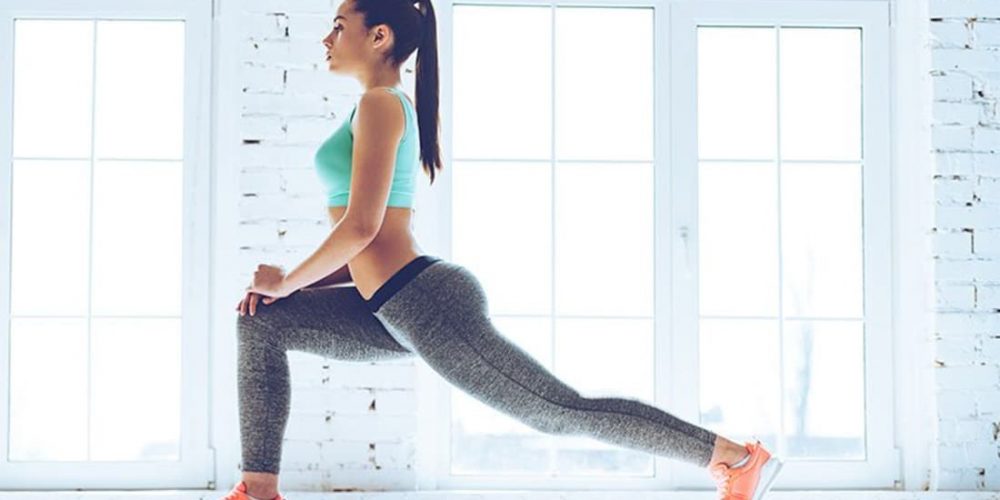
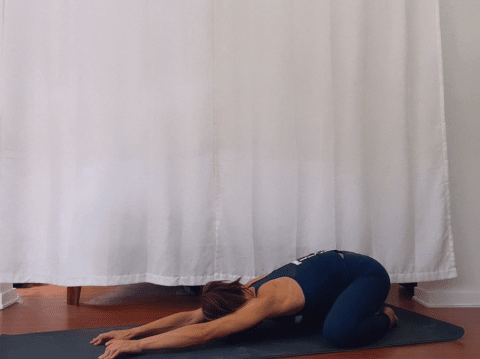
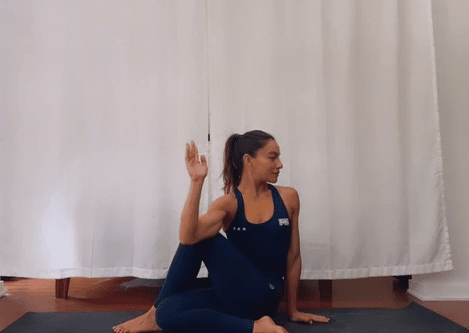
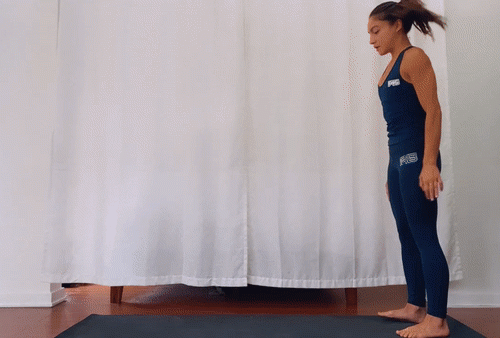
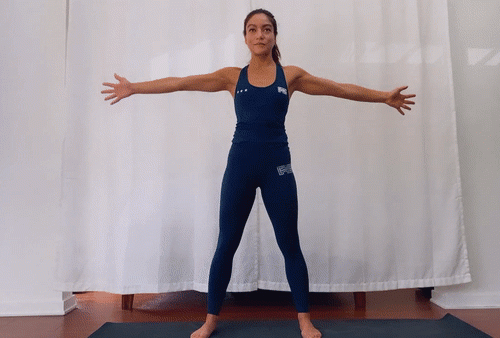
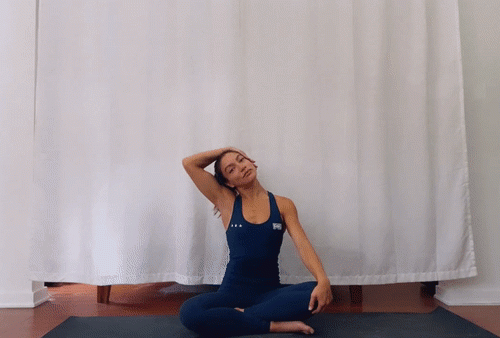







Comments 0